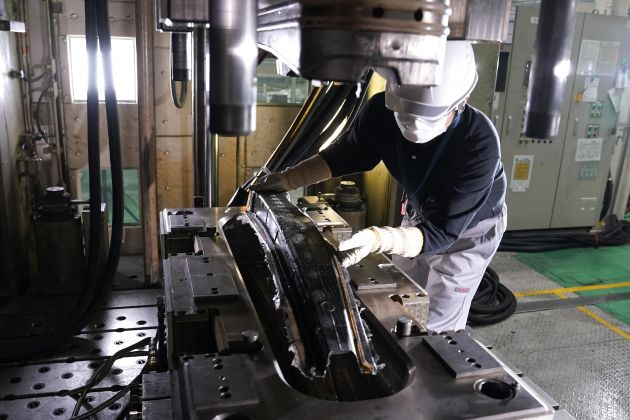Everyone knows that carbon fibre is an incredibly strong and lightweight material, used in everything from the fastest supercars to the latest aeroplanes. In a world that puts an increasing emphasis on fuel economy and electric range, this composite material has the biggest potential to reduce a car’s weight without sacrificing crash protection.
But while efforts have been undertaken to make the material viable for mass-market vehicles (the BMW i3 and i8, which use carbon fibre passenger cells, being notable examples), it’s still way too expensive and difficult to shape, hampering the production of carbon fibre automotive components.
Nissan, however, says it has achieved a breakthrough in the development and manufacturing process, which it claims will cut the development lead time by half and slash the moulding cycle time by as much as 80%. Currently, carbon fibre components are made using compression resin transfer moulding, in which resin is injected over the preformed fibres while the mould is left partially open before being pressed.
The benefit of this process is that it takes a shorter time for the resin to be spread across the mould so that the components can come out quicker. What Nissan’s engineers have done is develop techniques to simulate the permeability of the resin in the fibres accurately, as well as using a transparent die and an in-die temperature sensor to visualise resin flow behaviour.
These new processes not only cut down on costly mould development times but also optimise the grooves for the resin to spread in, further reducing the cycle time. Nissan plans to use carbon fibre as a structural component in future models, particularly in the B-pillars.
Source: Read Full Article



